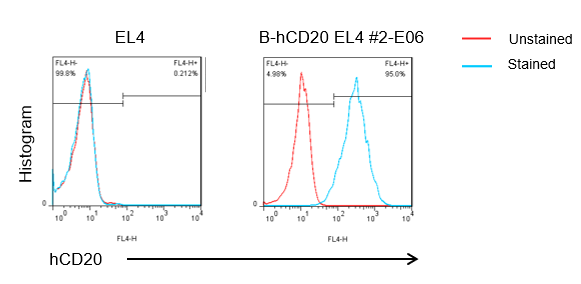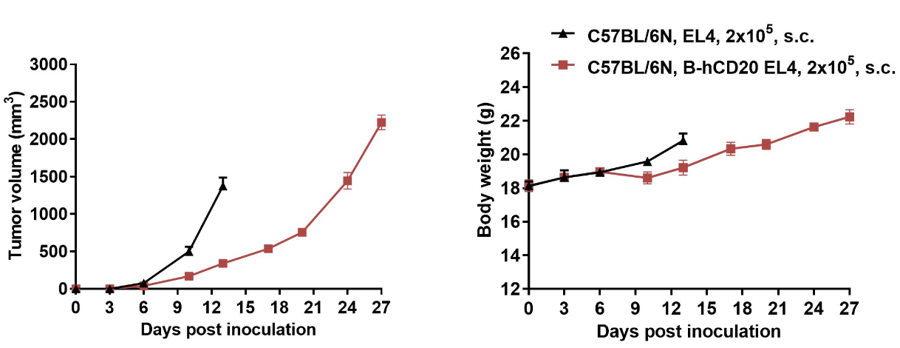Basic Information
Description
The human CD20 coding sequence was inserted into the ROSA26 locus in EL4 cells. Human CD20 is highly expressed on the surface of B-hCD20 EL4 cells.
-
Targeting strategy

-
Gene targeting strategy for B-hCD20 EL4 cells. The exogenous promoter and human CD20 coding sequence was inserted into the ROSA26 locus in murine.
-
Protein expression analysis

-

CD20 expression analysis in B-hCD20 EL4 cells by flow cytometry. Single cell suspensions from wild-type EL4 and B-hCD20 EL4 cultures were stained with species-specific anti-CD20 antibody. Human CD20 was detected on the surface of B-hCD20 EL4 cells but not wild-type EL4 cells. The 2-E06 clone of B-hCD20 EL4 cells was used for in vivo experiments.
-
Tumor growth curve & Body weight changes

-

Subcutaneous homograft tumor growth of B-hCD20 EL4 cells. B-hCD20 EL4 cells (2×105) and wild-type EL4 cells (2×105) were subcutaneously implanted into C57BL/6N mice (female, 6-9-week-old, n=6). Tumor volume and body weight were measured twice a week. (A) Average tumor volume ± SEM. (B) Body weight (Mean± SEM). Volume was expressed in mm3 using the formula: V=0.5 X long diameter X short diameter2. As shown in panel A, B-hCD20 EL4 cells were able to establish tumors in vivo and can be used for efficacy studies.
Animals with tumor volume over 3000mm3 in the control group were euthanized.


